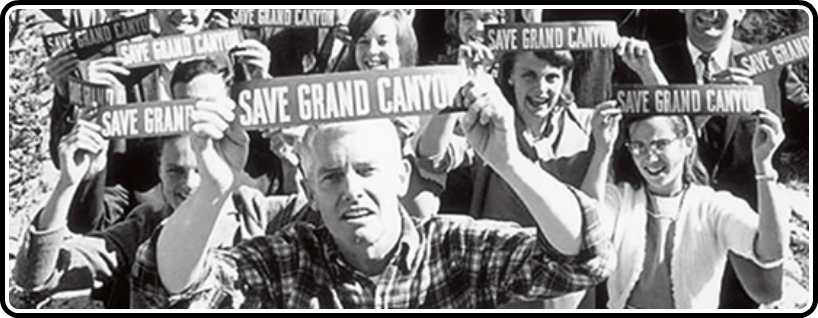
A Fierce Green Fire is a sort of crowded history lesson. Covering a broad overview of environmentalism’s historical trek and split into five equally broad sections, this is more a schizophrenic introduction than anything else, bound together by chronology. This makes it informative but also a little dry and surface-level. It covers a lot of ground to be sure, too much ground, but it effectively rounds up a lot of information resulting in the kind of film that feels more suited for the classroom or something you stumble upon channel flipping than essential viewing.
The first section, “Conservation”, covers the beginnings of awareness. The title of the film comes from a young forest ranger named Aldo Leopold, who claimed to see a fierce green fire in a wolf he had shot. It becomes equated to the personal experience one has that makes clear the effect our actions have on nature in one way or another and always for the worse. Kitchell covers the founding of the Sierra Club by John Muir and later in history, the battle against dam-building in the Grand Canyon.
Act 2, titled “Pollution”, is one of the more rewarding segments, covers the Carter-era case of New York’s Love Canal neighborhood which doubles as the dumping ground of 20,000 tons of toxic waste. It’s a people-centered case which sees Lois Gibbs and company fighting for themselves, for their children and their unborn children. These were ordinary housewives and husbands, conducting studies and acting as protesters and negotiators. When they have to, people will fight.
The film peaks when it goes how much pollution affects minorities who lack comparable political standing, the emergence of environmental justice (which I wish there was quite a lot more on) and the internationalization of environmental issues. After a chapter on Alternatives, Greenpeace, whaling and what grew out of the counter-culture movement, there’s a profile on Chico Mendes in “Going Global”, the film’s most stimulating segment. A rubber tapper who united forest communities against ranchers to protect the Amazon and their homes, his assassination prompted even more action. His segment also illustrates that victories though there may be, the fight over the Amazon continues despite major successes achieved. The Chico (“tree-huggers”) in India gets a small piece of the focus as well.
There are some unimaginative music choices and having five narrators, one for each chapter, doesn’t make much sense. The narration isn’t heavy enough to justify it. The last segment on climate change is pretty weak. Maybe it’s because it’s so overwhelming that to cover it in twenty minutes seems useless. Maybe it’s because it almost feels like water doused on all the fiery success we see over the decades. In a sense it’s supposed to say the battle has just begun, but it’s a crucial example of A Fierce Green Fire casting the net too wide. Plus, I would hope people watching the film in the first place would already realize climate change is, spoiler alert, an issue of incalculable proportions. Ultimately, it feels more like a wholly serviceable introductory piece than anything.
Full Schedule for the 2013 Portland International Film Festival
For details and more information



![Bergman Island (The Criterion Collection) [Blu-ray]](https://criterioncast.com/wp-content/uploads/2022/11/bergman-island-the-criterion-collection-blu-ray-400x496.jpg)
![This Is Not a Burial, It’s a Resurrection (The Criterion Collection) [Blu-ray]](https://criterioncast.com/wp-content/uploads/2022/11/this-is-not-a-burial-its-a-resurrection-the-criterion-collection-blu-ray-400x496.jpg)
![Lars von Trier's Europe Trilogy (The Criterion Collection) [The Element of Crime/Epidemic/Europa] [Blu-ray]](https://criterioncast.com/wp-content/uploads/2022/11/lars-von-triers-europe-trilogy-the-criterion-collection-the-element-of-400x496.jpg)
![Imitation of Life (The Criterion Collection) [Blu-ray]](https://criterioncast.com/wp-content/uploads/2022/11/imitation-of-life-the-criterion-collection-blu-ray-400x496.jpg)
![The Adventures of Baron Munchausen (The Criterion Collection) [4K UHD]](https://criterioncast.com/wp-content/uploads/2022/11/the-adventures-of-baron-munchausen-the-criterion-collection-4k-uhd-400x496.jpg)
![Cooley High [Criterion Collection] [Blu-ray] [1975]](https://criterioncast.com/wp-content/uploads/2022/11/cooley-high-criterion-collection-blu-ray-1975-400x496.jpg)